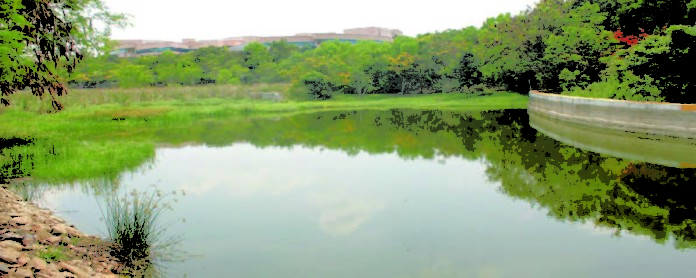It appears sustainability has got into Infosys’ skin. What it is embarking on is serious stuff and is driven by its belief that sustainability focus results in innovation. In his second piece for SustainabilityNext Rohan Parikh, Head of Green Initiatives and Infrastructure, Infosys, highlights how deep his company is investing in this area.
Observed concentrations of carbon dioxide (CO2) in the atmosphere have exceeded the long feared milestone of 400 parts per million (ppm). Burning of coal for power generation is one of the biggest culprits responsible for this increase. However, India together with China, are still planning to add one trillion watts of coal-fired power plants which will consume 90 percent of the projected growth in global coal demand to 2016. The global coal cartel, recognizing that both India and China are net importers, increased the price of coal, in turn making most of the Indian coal projects economically unviable.
How long will India continue to remain at the mercy of other countries to meet its energy needs? How long will we export our hard-earned foreign exchange to import fossil fuels and how long will it take before every Indian has access to energy? India needs to invest heavily in expanding its share of clean distributed energy as it moves towards inclusive economic growth. We need innovative models to make renewable energy competitive with the grid. A good example is the joint effort by Infosys, the Confederation of Indian Industry, and World Resources Institute to form the Green Power Market Development Group. This consortium is consolidating the electricity demand of large corporates to build economies of scale, hedge financing risks and influence the regulators to create stable and favorable renewable energy policies. If successful, this initiative would provide a much-needed green alternative to monopolistic state-run utilities.
If we have to save our planet, we need corporate leaders who have the courage and conviction to take risks and make sustainability the cornerstone of their business strategy. In 2009 Ram Nidumolu, C.K. Prahalad and M.R. Rangaswami studied 30 large companies for their sustainability practices. They learned that the quest for sustainability drove these organizations towards organizational and technological innovations, which improved top and bottom lines by creating new sources of revenue and reducing costs, respectively. The authors concluded that sustainability was actually the new frontier of innovation.
Progress in numbers
Infosys is an example where investments in sustainabilitydriven innovations have started paying dividends. Infosys invested in a dedicated research team which worked with universities and engineering firms across the world to come up with new ideas. Most of our new buildings were converted to live labs in which innovative technologies were tested and optimized based on data from sensors and employee feedback. These innovations have helped Infosys achieve a record energy performance index of 85 KWh per square meter per annum, (including plug loads) which is one third of the EPI of an average office building in India. The connected electrical load of the new Infosys building is just 3.5 Watts per square feet, which is one of the lowest in the industry. Innovative whole system retrofits, have delivered a payback in less than three years. These retrofits and right sizing of equipment have helped Infosys reduce its connected load significantly. These savings have enabled us to surrender 10% of our total contract demand.
Through these focused efforts Infosys has been able to reduce its per capita electricity consumption by 40% and water consumption by 34%. We are now working towards mainstreaming the new ideas and technologies adopted in their campuses by publishing their case studies.
The Infosys green initiatives team is now working on the next generation of technologies to further reduce resource consumption. The smart buildings team is focusing on wireless and energy harvesting sensors which are powered by either solar, piezoelectric or thermocouple technologies. These sensors require no copper wiring for power or communications leading to significant savings in copper wiring.
Waste management is another area of innovation. Infosys became the beta customer, for a pyrolysis plant, built by a Mumbai based company called STEPS. This technology aims to create wealth from waste by converting plastic into oil, gas and char; the oil by-product is used to run boilers and lawn mowers. Initial trials have shown very encouraging results. This concept could potentially be scaled up to address the problem of plastic disposal in our cities.
Assamese bamboo – energy crop of India?
In order to offset its travel related emissions, Infosys has planted a fast growing Assamese variety of bamboo, capable of absorbing 50 kilograms of carbon dioxide in a year, which is approximately five times the performance of most plants. This bamboo grows about one foot a day for a month in the monsoon and in two years reaches a height of 60 feet. This bamboo, nicknamed “Bheema Bamboo” by biotechnology lab, Growmore Technologies, has the potential to become the energy crop of the developing world.
It is heartening to see many other Indian companies spearheading similar green innovations within their respective industries. But a lot more can be achieved by joining forces. We at Infosys have embarked upon a mission to mainstream the emerging technologies used in our campuses through case studies and an awareness building campaign. We look forward to working with the sustainability leaders in other industries and sharing their success stories. Our hope is that their peers and aspiring entrants will introduce the same concepts in their business models to improve the quality of life of future generations.











Great article and great work Rohan. Am sure the world will follow Infy soon in the times to come.
God Bless!